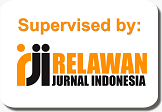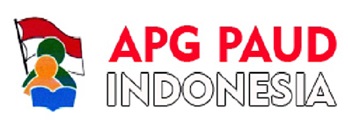Kolase Edukatif: Strategi Pemanfaatan Media Kolase Dalam Mengembangkan Minat Belajar Anak
Abstract
The essence of early childhood education is to motivate children so that their potential can develop optimally. Learning is aimed at mastering basic knowledge and skills and fostering expression, attitudes, and the child's interest in learning. The child's learning interest can be influenced by internal and external factors, such as encouragement from within the child and the surrounding environment. One of the issues in early childhood learning is the lack of learning interest, which can be caused by internal and external factors. Learning interest, as an individual's inclination towards something desirable, has a significant impact on a child's learning achievement. Therefore, it is important to create an enjoyable learning environment that stimulates the child's interest. Collage media is one form of learning activity that can enhance creativity and learning interest in children. Collage activities allow children to express themselves creatively by combining various materials, such as paper, fabric, colors, and shapes. The creativity of children can be developed from an early age, and this creativity can help them overcome various challenges in life. This research adopts the Classroom Action Research (CAR) approach with 25 students from TK A Pratama Widya Pasraman Adnyani as research subjects. Through continuous actions, the use of collage media successfully increased the children's learning interest significantly. The research results indicate that children showed a positive response to college activities, and their learning interest increased significantly after the implementation of actions.
References
Astriya, B. R. I., & Kuntoro, S. A. (2015). Pengembangan kreativitas dan minat belajar anak usia 3–4 tahun melalui permainan konstruktif. Jurnal Pendidikan dan Pemberdayaan Masyarakat, 2(2), 131–140. https://doi.org/10.21831/jppm.v2i2.6329
Astuti, N. P., & Watini, S. (2022). Meningkatkan minat belajar menggunakan model bermain asyik pada anak usia dini. Aksara: Jurnal Ilmu Pendidikan Nonformal, 8(3), 2141–2150. https://doi.org/10.37905/aksara.8.3.2141-2150.2022
Berk, L. E. (2020). Child development (10th ed.). Boston: Pearson.
Csikszentmihalyi, M. (1997). Finding flow: The psychology of engagement with everyday life. New York: Basic Books.
Fakhriyani, D. V. (2016). Pengembangan kreativitas anak usia dini. Wacana Didaktika, 4(2), 193–200. https://doi.org/10.31102/wacanadidaktika.4.2.193-200
Hana, D., Fitri, A., & Mayar, F. (2020). Pelaksanaan kemampuan motorik halus anak melalui kolase di taman kanak-kanak. Jurnal Pendidikan Tambusai, 4(2), 1011–1017. https://jptam.org/index.php/jptam/article/view/563
Handayani, Y., Satriawan, H., & Nurhayati, N. (2025). Meningkatkan minat belajar mengenal angka melalui media kolase angka berbasis loosepart pada anak kelompok A TK HI Mutiara Palingkau Baru. Journal of Islamic Studies (JIS), 8(1), 30–39. https://yptb.org/index.php/jis/article/view/1432
Hidi, S., & Renninger, K. A. (2006). The four-phase model of interest development. Educational Psychologist, 41(2), 111–127. https://doi.org/10.1207/s15326985ep4102_4
Isbell, R., Sobol, J., Lindauer, L., & Lowrance, A. (2004). The effects of storytelling and story reading on the oral language complexity and story comprehension of young children. Early Childhood Education Journal, 32(3), 157–163. https://doi.org/10.1023/B:ECEJ.0000048967.94189.a3
Kemmis, S., & McTaggart, R. (1988). The action research planner. Geelong: Deakin University.
Munandar, U. (1989). Pengembangan kreativitas anak berbakat. Jakarta: Rineka Cipta.
Piaget, J. (1964). Development and learning. Journal of Research in Science Teaching, 2(3), 176–186.
Puspitasari. (2012). Menyusun perencanaan pembelajaran AUD. Jurnal Educhild, 1(1), 67–76. https://doi.org/10.33578/jpsbe.v1i1.1626
Putri, S. I., Lestari, R., & Anggraeni, W. (2024). Peningkatan kreativitas anak usia dini melalui kegiatan kolase di PAUD Semai Harapan Bangsa Mataram. Pendas: Jurnal Pendidikan Dasar, 9(1), 92–102. https://journal.unpas.ac.id/index.php/pendas/article/view/13140
Rahayuliana, S., & Watini, S. (2022). Peran guru dalam meningkatkan minat belajar anak usia dini. Jurnal Obsesi: Jurnal Pendidikan Anak Usia Dini, 6(3), 1720–1732. https://doi.org/10.31004/obsesi.v6i3.1368
Rahmadianti, N. (2020). Pemahaman orang tua mengenai urgensi bermain dalam meningkatkan perkembangan sosial anak usia dini. Early Childhood: Jurnal Pendidikan, 4(1), 57–64. https://doi.org/10.35568/earlychildhood.v4i1.717
Rahmat, J., & Sum, S. (1989). Kreativitas dan pendidikan anak usia dini. Bandung: Remaja Rosdakarya.
Rahmawati, D. (2023). Peningkatan kreativitas anak melalui media kolase bahan alam di PAUD X. Jurnal Riset Pendidikan Guru PAUD (JRPGP), 2(3), 101–110. https://journals.unisba.ac.id/index.php/JRPGP/article/view/3004
Riel, M. (2007). Understanding action research. Center for Collaborative Action Research. Pepperdine University. http://cadres.pepperdine.edu/ccar/define.html
Ryan, R. M., & Deci, E. L. (2000). Self-determination theory and the facilitation of intrinsic motivation, social development, and well-being. American Psychologist, 55(1), 68–78. https://doi.org/10.1037/0003-066X.55.1.68
Santrock, J. W. (2011). Educational psychology (5th ed.). New York: McGraw-Hill.
Santrock, J. W. (2021). Life-span development (18th ed.). New York: McGraw-Hill.
Sembiring, E., & Handayani, R. (2023). Upaya meningkatkan minat belajar anak melalui kegiatan kolase biji-bijian pada anak usia 5–6 tahun di TK Sejahtera II Namorambe. Jurnal Pendidikan Anak Usia Dini, 5(2), 115–124. https://repository.umnaw.ac.id/jspui/handle/123456789/3381
Sit, M., Khadijah, Nasution, F., Wahyuni, S., Rohani, Nurhayani, Sitorus, A. S., & Armayanti, R. (2016). Pengembangan kreativitas anak usia dini: Pengembangan teori dan praktik. Perdana Publishing.
Slavin, R. E. (2020). Educational psychology: Theory and practice (13th ed.). New York: Pearson.
Thamara, S. (2024). Pengaruh kegiatan kolase terhadap keterampilan motorik halus anak prasekolah di TK Permata Hati, Moilong. Jurnal Skolastik, 10(2), 45–53. https://jurnal.unai.edu/index.php/jsk/article/view/3886
Vygotsky, L. S. (1978). Mind in society: The development of higher psychological processes. Cambridge, MA: Harvard University Press.
Watini, S. (2020). Pengaruh media visual terhadap minat belajar anak usia dini. Jurnal Obsesi: Jurnal Pendidikan Anak Usia Dini, 4(2), 977–986. https://doi.org/10.31004/obsesi.v4i2.497
Widyasanti, N. P. (2021). Strategi pengembangan kreativitas anak usia dini di masa pandemi. Kumarottama: Jurnal Pendidikan Anak Usia Dini, 1(1), 74–83. https://doi.org/10.53977/kumarottama.v1i1.287

This work is licensed under a Creative Commons Attribution-ShareAlike 4.0 International License.
Authors who publish with this journal agree to the following terms:
- Authors retain copyright and grant the journal right of first publication with the work simultaneously licensed under a Creative Commons Attribution-ShareAlike 4.0 International License that allows others to share the work with an acknowledgement of the works authorship and initial publication in this journal.
- Authors are able to enter into separate, additional contractual arrangements for the non-exclusive distribution of the journals published version of the work (e.g., post it to an institutional repository or publish it in a book), with an acknowledgement of its initial publication in this journal.
- Authors are permitted and encouraged to post their work online (e.g., in institutional repositories or on their website) prior to and during the submission process, as it can lead to productive exchanges, as well as earlier and greater citation of published work (See The Effect of Open Access).











.png)














